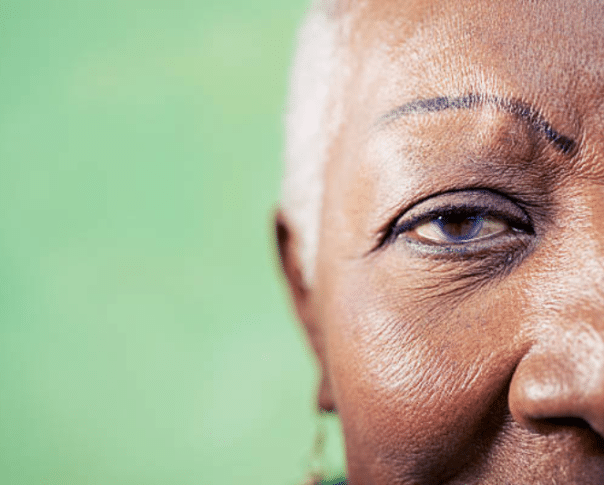More than 3 million people in the United States currently suffer from Glaucoma. By 2030, this number could increase to 4.2 million people, as more Americans age. Glaucoma often occurs without warning and can be nearly impossible to discover without receiving a proper diagnosis by a medical professional. It has been called “the sneak thief of sight” because of how difficult it can be to self-diagnose.
Glaucoma is the leading cause of irreversible blindness in Americans, specifically African American and Hispanic seniors, in fact it is 6-8 times more prevalent in African Americans than Caucasians. Doctors estimate that more than half of those with Glaucoma are completely unaware that they are affected, even though they are experiencing the slow degradation of sight associated with the disease. The difficulty to diagnose Glaucoma coupled with the boom in the number of people in the aging population could potentially lead to a huge increase in the number of Glaucoma cases, increasing the need for awareness and proactivity.
What is Glaucoma?
Glaucoma is a group of diseases that specifically damage the eye's optic nerve, and can often lead to partial or total vision loss. The most common form of Glaucoma is open-angle Glaucoma, which is characterized by a slow increase in eye pressure. While there is no cure for Glaucoma once it has progressed too far, being diagnosed early opens up a series of treatments that can preserve vision health.
Glaucoma typically sets in on peripheral vision first. If you start to notice that things on the edge of vision become more blurry or dark than objects directly in front of you, then you might be at risk for vision loss and should immediately consult your doctor. Vision loss in your peripherals will eventually lead to issues with your central vision, which is required for direct focus on objects and daily actions like reading or driving.
Raising Awareness
Glaucoma.org is a website dedicated to educating and spreading awareness about the potential dangers of Glaucoma and ways to best cope with a diagnosis. They mention a few specific methods for helping to spread awareness to loved ones, including:
- As you age, make regular visits to the eye doctor
- Speaking to friends and family about Glaucoma. If you do fear that you may be suffering from Glaucoma, or if you have already been diagnosed, let others know to get checked out and not to be ashamed.
- Visit Glaucoma.org for free educational materials.
- Get involved with your community through fundraisers, research, and information sessions.
It can be difficult to openly confront something like Glaucoma since it is a slow progressing disease. People can easily fall victim to a “wait and see” mentality, or assign the symptoms to simple loss of vision related to age. Awareness is important because it greatly reduces an individual’s chances of disregarding the signs.
Reducing Your Risk
Aging or being genetically predisposed to Glaucoma does not necessarily mean you can't take actions to prevent issues from arising. Through extensive research, it has been discovered that there are some ways to minimize, or even completely avoid Glaucoma.
- If you are in any of the previously mentioned high-risk groups (Latinos, African Americans, Seniors, or those diagnosed with Diabetes), you should receive a comprehensive eye exam annually to catch Glaucoma early. If your eye care specialist discovers any signs of Glaucoma, they can prescribe eye drops that are capable of preventing any progression. Annual eye exams are covered by Medicare for individuals in high-risk groups.
- Speak to your family members about their overall vision health. Glaucoma is hereditary, so if any of your family members have vision issues, you may be at risk as well. Being more proactive about your vision health is easier with more knowledge.
- Like nearly every other health issue, overall physical health will reduce your risk factors. Maintaining a healthy weight, controlling your blood pressure, being generally physically active, and avoiding smoking will prevent Glaucoma in nearly every case. Diabetes, a major risk factor, can also be prevented by living a healthy lifestyle.
Living with Glaucoma
If you have already been diagnosed with Glaucoma, there are several ways to make day to day life much more comfortable.
Loss of peripheral vision can make it extremely difficult to see daily obstacles that would normally be considered simple.
- Have loved ones or a home care professionals mark stairs, treads, and handrails to make them easy to identify. Use brightly colored tape or paint to make important navigational tools clearer.
- Head injury is one of the more common issues that can arise from living with poor vision - be sure that doors and cabinets are always in the same position; either fully opened or closed. Creating predictable walking paths through the home is important.
- Low light situations are particularly difficult to those suffering from vision loss. Eyes adjust much more slowly when vision is already blurry and in a relatively constant low field of view state. Additional lighting should be installed in any living areas. The additional brightness considerably improves vision clarity and prevent accidents.
- Remove as many obstacles as possible from the home. Things like area rugs, and low height furniture like coffee tables and nightstands can be extremely difficult to see without peripheral vision. It is best to keep any pathways in the home completely free of clutter or extra furniture to make navigating as predictable as possible.
If you or a loved one would like help making your home as low vision safe as possible, or if you are interested in a consultation to see which in-home care services would be right for your loved one, we can help. We refer qualified and compassionate care providers who can help with many different services to help prepare your loved one for the future and keep them home. For more information about our services and coverage area, contact us to speak with a Client Care Liaison.


